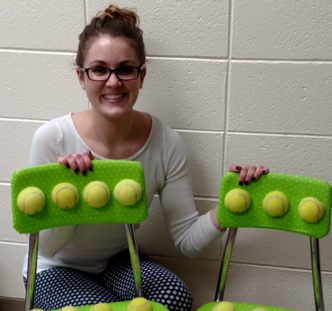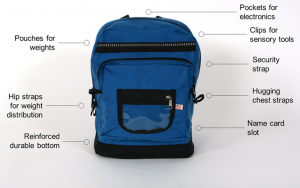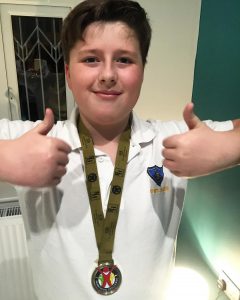 Arthur was a single middle-aged man who had lived alone since the death of his mother. His greatest love in life was trains and he knew absolutely everything about them. If you ever bumped into Arthur, he would start talking about trains whether you wanted to or not.
Arthur was a single middle-aged man who had lived alone since the death of his mother. His greatest love in life was trains and he knew absolutely everything about them. If you ever bumped into Arthur, he would start talking about trains whether you wanted to or not.
Unbeknownst to Arthur, he was unwittingly boring people to death. Some avoided him because they couldn’t cope with having train facts downloaded to them. Some became silently frustrated as he stubbornly refused to pick up on subtle hints that they were not interested. Others tried to be more direct by saying, “Arthur stop talking to me about trains.” But even this approach was rarely successful, as his love of trains was so great he couldn’t contain himself.
We lost touch with Arthur a long time ago, but I now realise that he was probably autistic.
When he was younger, our son Edward used to interact in a similar way to Arthur; although, thankfully for us, he was interested in quite a few different topics. Conversation with Edward was pretty much a one-sided information download rather than a conventional two-way exchange.
Once I observed him and his friend Ned playing a game where Ned said the name of an animal and then poked Edwards’s shoulder (which was the imaginary computer button), and Edward proceeded to give a random fact about the named animal in a robotic voice. They played the game for a good hour with Ned trying to catch Edward out with more obscure animals; both had a lot of fun.
This type of interaction, though, is hardly fit for purpose when it comes to making and keeping friends, especially once you hit the teenage years. I realised that Edward was going to have to up his game and learn some subtle but important conversational rules to help him get on in life.
We started tackling the “art of conversation” training when he started high school. We spent a lot of time, over many years, talking about the things people do if they are interested in what you are saying:
- They look at you.
- They lean towards you very slightly.
- They make little sounds to let you know they are listening (mmm, yeah, uh huh).
- They nod their heads if they agree with you.
Non-verbal forms of communication can be very hard to notice if you have autism, but if you are made aware of these communication signals you can look out for them and learn to understand what they mean.
We also taught Edward to make a statement about a topic he wanted to talk about and pause (count to five silently). We told him that if the other person was interested in his chosen topic, they would ask him a question about it. We explained that he could answer the question but only with one or two sentences. Then he had to stop and wait to see if the person wanted to carry on talking by asking another question or making a comment about the topic, which was their way of signalling that they were still interested.
We found it helpful to give Edward a set of descriptions of what polite people might do if they are getting bored, which included:
- Glancing at the clock, phone, or other people a lot.
- Fidgeting more.
- Hinting by saying things like, “I’m not really into X” or “I don’t really know much about X” or “I’m not as into this stuff as much as you.”
- Becoming completely silent.
- Looking at you less often.
- Introducing a completely different topic into the conversation.
It’s much easier for Edward to know what’s going on if people ditch polite etiquette. Edward would be completely fine with someone saying, “I’m bored with this conversation. Can we talk about something else?”. But not many people are able to be this direct in their communication style, especially with a kid.
I was speaking to Edward about communication just before I wrote this and he reflected that his conversational style has changed over recent years, in that he is no longer just information-downloading at people but now has conversational turns. I asked him how he thought he had managed to make the change and he replied:
“I think very consciously about what to say to make a conversation work, just like everyone else does.”
My son was unaware that most of us never have to give much thought to talking to people—we just get on and do it. His words made me feel so proud of what he has achieved, but they also gave me greater insight into how much effort he makes just to have a chat with his friends.
With our current education system, it’s easy to get caught up with making sure our kids are making academic progress. But if you are raising or teaching an autistic child, you have the additional task of trying to help them learn these types of social communication skills.
If you are about to embark on “art of conversation” training with your own child, I wish you all the very best.
A version of this piece was first posted here.



 Arthur was a single middle-aged man who had lived alone since the death of his mother. His greatest love in life was trains and he knew absolutely everything about them. If you ever bumped into Arthur, he would start talking about trains whether you wanted to or not.
Arthur was a single middle-aged man who had lived alone since the death of his mother. His greatest love in life was trains and he knew absolutely everything about them. If you ever bumped into Arthur, he would start talking about trains whether you wanted to or not.
 Although Liam Smith suffered his first-ever defeat to Saul ‘Canelo’ Álvarez in the recent WBO light middleweight title bout AT&T Stadium in Dallas, he’s far from a loser in our eyes. Liam, along with older brothers Paul and Stephen, and younger brother Callum, is part of a dynamic professional boxing family hailing from Liverpool, England. In 2013, the family made history when three of the brothers claimed the British light-middleweight (Liam), super-featherweight (Stephen), and super-middleweight (Paul) belts at the same time. Younger brother Callum is also a boxer to be reckoned with, with many experts saying he’s the best of the foursome.
Although Liam Smith suffered his first-ever defeat to Saul ‘Canelo’ Álvarez in the recent WBO light middleweight title bout AT&T Stadium in Dallas, he’s far from a loser in our eyes. Liam, along with older brothers Paul and Stephen, and younger brother Callum, is part of a dynamic professional boxing family hailing from Liverpool, England. In 2013, the family made history when three of the brothers claimed the British light-middleweight (Liam), super-featherweight (Stephen), and super-middleweight (Paul) belts at the same time. Younger brother Callum is also a boxer to be reckoned with, with many experts saying he’s the best of the foursome.

 The feel-good photo of the week has got to be the one of Florida State University wide receiver Travis Rudolph sitting at a lunch table across from 11-year-old Bo Paske, a student at Montford Middle School in Tallahassee, Florida. The photo, and accompanying story, went viral after Bo’s mom posted it on Facebook on Tuesday, to express her gratitude to Travis.
The feel-good photo of the week has got to be the one of Florida State University wide receiver Travis Rudolph sitting at a lunch table across from 11-year-old Bo Paske, a student at Montford Middle School in Tallahassee, Florida. The photo, and accompanying story, went viral after Bo’s mom posted it on Facebook on Tuesday, to express her gratitude to Travis.

 Back-to-school time often means new school gear, including a new backpack. Check out this Nesel (pronounced like “nestle”) Pack, designed by six college students at the University of Minnesota for children ages 6-12 with autism.
Back-to-school time often means new school gear, including a new backpack. Check out this Nesel (pronounced like “nestle”) Pack, designed by six college students at the University of Minnesota for children ages 6-12 with autism.


 Gail Twist was so surprised, and gladdened, by a letter sent by her son’s teacher, that she posted it on Twitter, along with the words: In tears. A letter to my 11 yr old autistic son from his school. “These tests only measure a little bit of you.”
Gail Twist was so surprised, and gladdened, by a letter sent by her son’s teacher, that she posted it on Twitter, along with the words: In tears. A letter to my 11 yr old autistic son from his school. “These tests only measure a little bit of you.”
 As a professional lifestyle photographer, Jessica Orlowicz of
As a professional lifestyle photographer, Jessica Orlowicz of 

 According to many military parents, the U.S. Department of Defense isn’t the most progressive employer. Some parents of military dependents with autism—
According to many military parents, the U.S. Department of Defense isn’t the most progressive employer. Some parents of military dependents with autism—